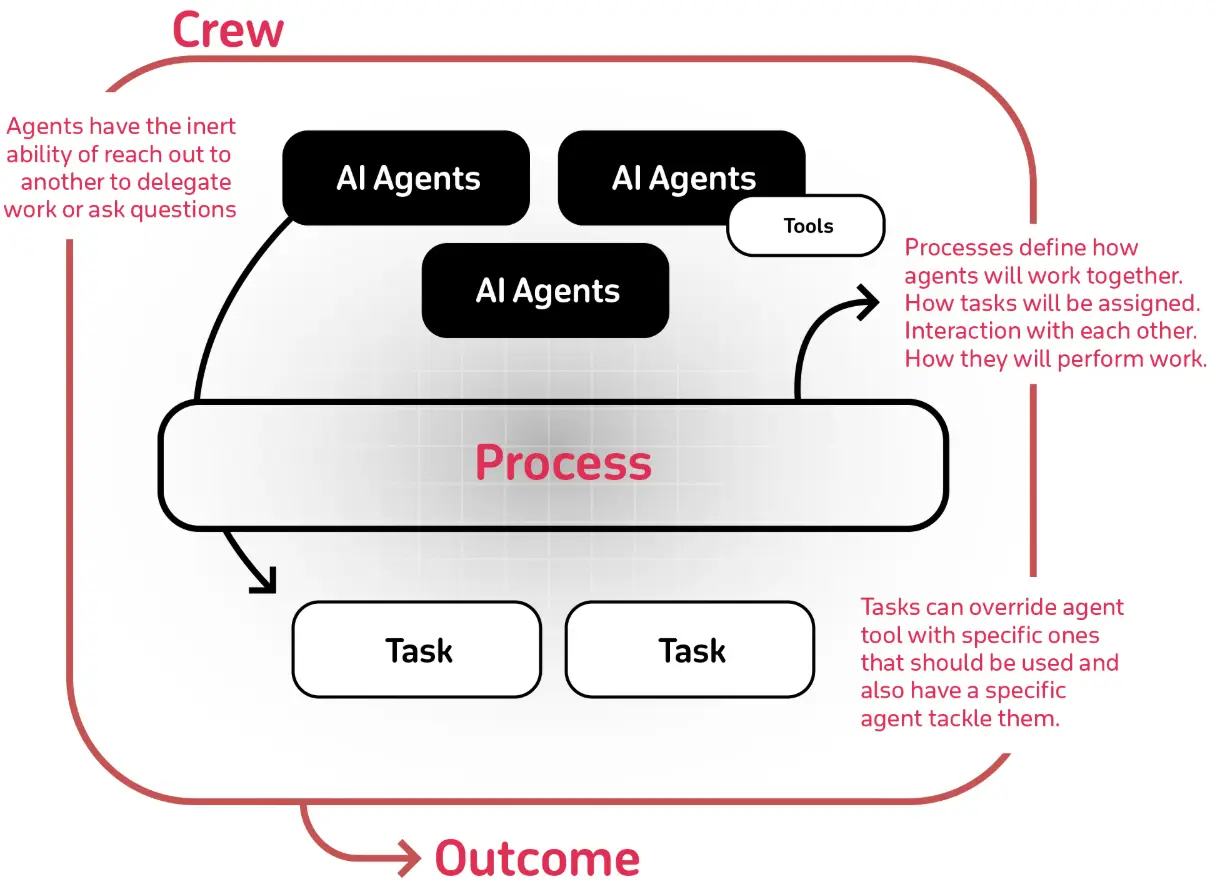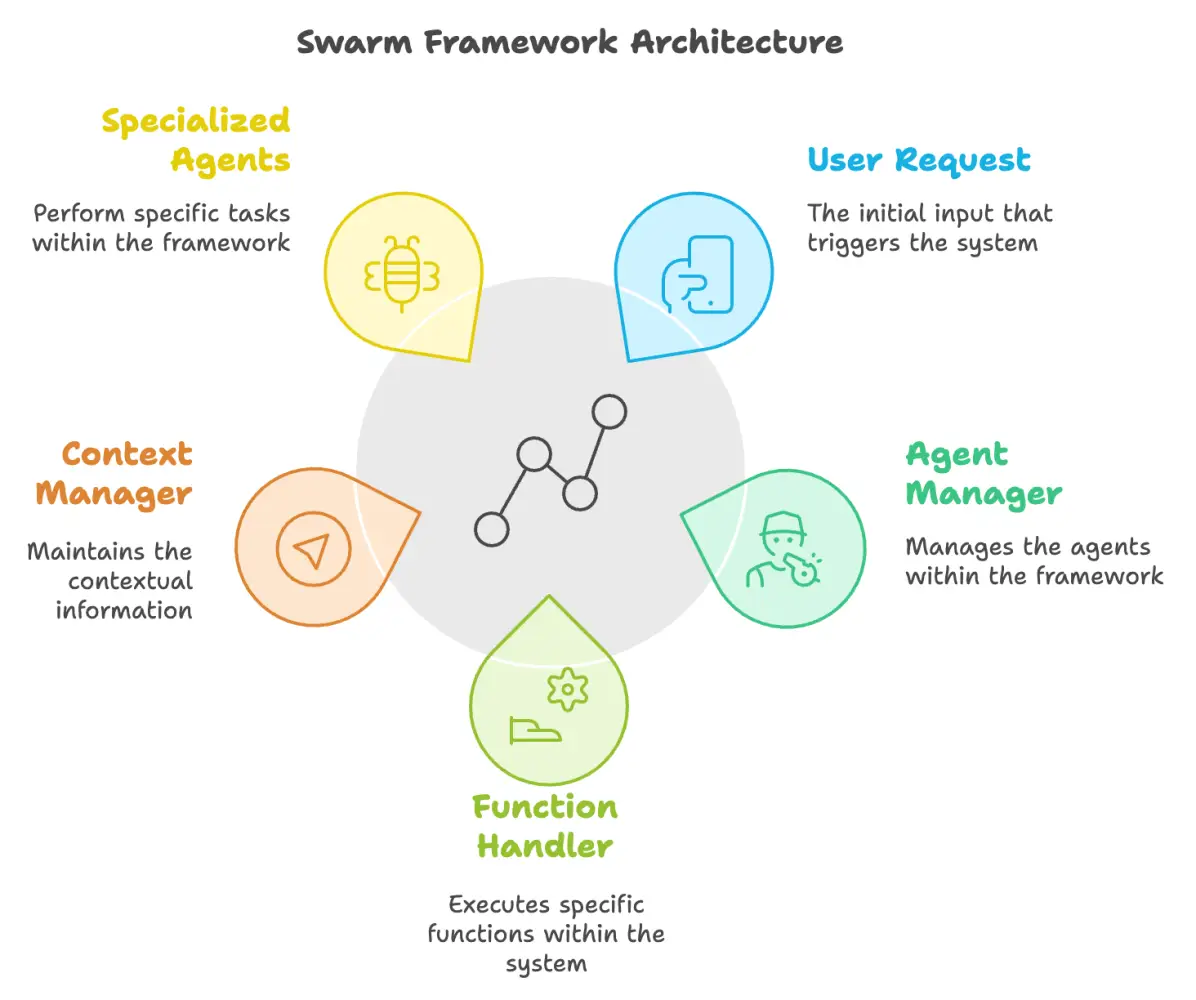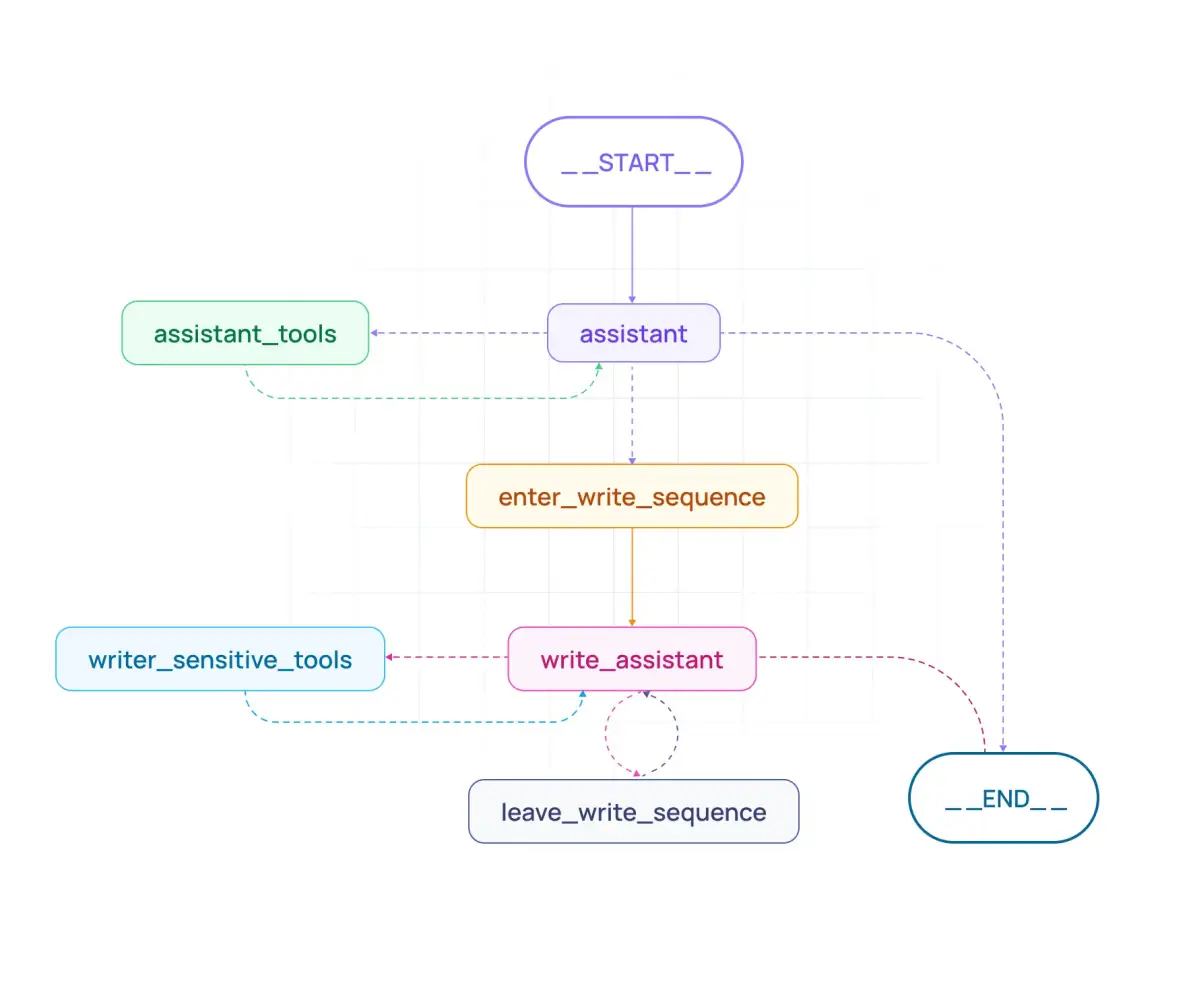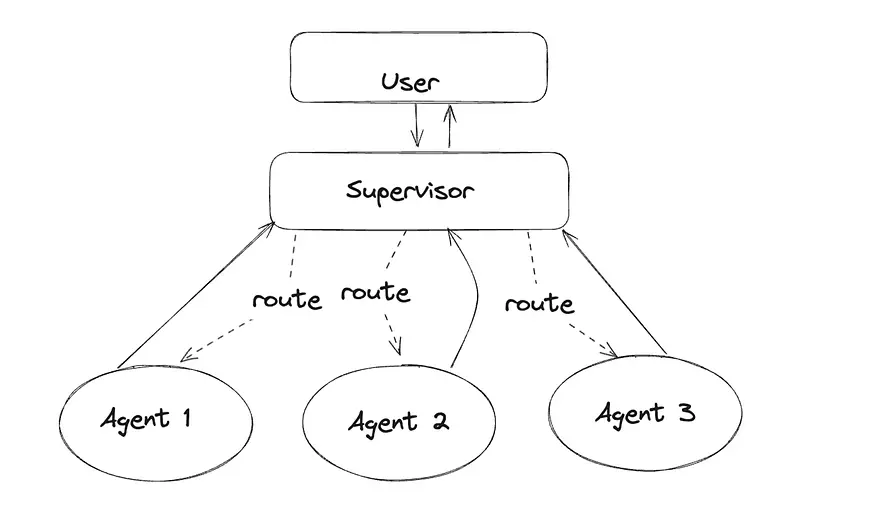Information
Insight Insight Insight January 7, 2025 Home Insight From Autonomous Agents to AI Teams: Multi-Agent Frameworks usher in a new era (Article 2) News News News Published on March 12, 2025 Published on Industry Industry Industry Process Intelligence Process Intelligence Process Intelligence Business Case Business Case Business Case Published on March 10, 2025 Published on Technology Technology Technology CRM, Commercial Excellence CRM, Commercial Excellence CRM Commercial Excellence Business Case Business Case Business Case Published on February 28, 2025 Published on See more See more Terms of use We use cookies to improve your browsing experience and analyze our traffic. To find out more, read our Terms of use. By clicking on "Accept", you agree to the use of our cookies. AcceptReject Today, we continue our exploration of the world of generative AI, going one step further in our understanding of autonomous agents. In the previous articlewe saw how AI evolved from basic classification and regression algorithms, to deep learning, then Transformers, to advanced conversational tools like ChatGPT. These advances have put in our hands assistants capable of responding, learning, and even endowing themselves with a certain form of "internal logic". But there's a new leap ahead: multi-agent systems. We're no longer talking about a single agent, but entire teams of AIs working hand in hand. The idea is simple: faced with growing complexity, why not divide the work between several specialized agents, each with its own role, tools and expertise? This concept transforms the way we interact with AI, paving the way for a new era of autonomous collaboration. The idea is a powerful one: rather than executing commands on an ad hoc basis, AI agents operate as "digital foremen", coordinating different actions and tools, adapting to a variety of contexts. In this way, AI ceases to be a mere tool and becomes a genuine collaborator, a force for proposals and innovation. Initially, one of the great benefits of LLMs was that they were excellent "monolithic" assistants: a single model to answer all kinds of questions. This configuration is suitable for simple tasks, but quickly reaches its limits as complexity increases. A single agent can get lost in the multitude of tools at its disposal, struggling to manage an immense context, and lacking the specialization to deal with cutting-edge challenges. To understand how these agents gain in autonomy, we must delve into the heart of their architecture, often described by the triptych "Perception - Reflection - Action": These principles apply equally to individual agents and to multi-agent systems, where each entity has its own perception, its own brain and its own capacity for action. The difference lies in coordination: in a multi-agent system, communication mechanisms (memory sharing, message exchange, centralized supervision) enable agents to collaborate, learn from each other, or even simulate a kind of artificial "society". This notion of a "society of agents" - a set of intelligent entities interacting with each other - opens the way to complex scenarios where agents help each other, negotiate, specialize and work together to achieve common goals. The move from a single agent to groups of agents is not just a fad, it's a necessity. A single agent, no matter how efficient, comes up against several obstacles: The single agent is therefore often overwhelmed: its capabilities, though powerful, have limits that become apparent as complexity increases. To overcome these limitations, the multi-agent approach involves the cooperation of several autonomous agents, each with a clearly defined role: In short, the multi-agent approach makes it possible to distribute roles and create AI teams where each member knows his or her mission. The result? An AI that is more robust, more reactive, and better equipped to respond to the complex challenges facing businesses today. To effectively orchestrate a team of autonomous agents, it's not enough to create them and assign them roles. You also need frameworks capable of managing the entire communication chain, task distribution, context persistence and integration with external resources. These tools, still in their infancy on the market, are evolving rapidly and paving the way for new organizational models. Here are a few particularly representative examples of how these tools are helping to structure work between agents. LangGraph stands out for its highly structured vision: the logic of the multi-agent orchestra is conceived as a graph. Agents (and their tools) are represented by nodes, while information flows and tasks form the links between them. This visual, modular approach makes it easy to understand "who does what" and "how". The result? Clearer control of data flow, the ability to manage complex feedback loops, and better readability for adjusting the system over time. LangGraph is particularly well suited to scenarios where traceability, modularity and scalability are key concerns. AutoGen, developed by Microsoft, was one of the first frameworks to explore multi-agent orchestration. Originally designed to automate software development tasks, AutoGen coordinates interactions between a User Agent and an Assistant Agent within the same ecosystem. Its aim is to transform a request, often focused on code generation or execution, into a sequence of fluid actions. CrewAI relies on ease of use and a logic based on well-defined roles. Here, you can quickly set up a "team" of agents, each with an explicit function: research, writing, analysis... CrewAI's main asset is its user-friendliness, enabling you to create a team of agents without necessarily plunging into technical complexity. For a company wishing to rapidly test a prototype multi-agent system - for example, an internal assistant grouping together several "virtual experts" - CrewAI offers an intuitive and straightforward framework. It's an excellent starting point for learning about agent interactions, before moving on to more sophisticated or advanced solutions. OpenAI Swarm is an experimental framework designed to lower the barrier to entry for multi-agent systems. It focuses on simplicity and speed of implementation, without trying to cover everything. The idea is to enable experimentation with scenarios involving several agents, to validate hypotheses or test configurations before deployment on a larger scale. At this stage, Swarm is not intended to support complex production environments, but it does provide an ideal playground for understanding multi-agent dynamics and assessing the relevance of this model within an organization. Despite their differences, these frameworks share a few essential points in common: What sets them apart, however, is their maturity, technical complexity and strategic focus. LangGraph stands out for its extensibility and visual representation, CrewAI for its rapid implementation, and Swarm for its experimental lightness. The choice of framework will therefore largely depend on the context: business needs, size of the technical team, degree of specialization required, and desired level of integration with existing systems. These tools show the direction in which the ecosystem is heading: increasingly structured solutions, capable of managing agents with varied skills, guaranteeing overall consistency, and simplifying the deployment of real AI "teams" at the service of the company. Beyond the principles, selecting a multi-agent framework often boils down to a game of balances: Imagine a company looking to improve its business intelligence and decision support processes. Instead of a single assistant trying to cover all aspects, you could deploy an "AI team": Thanks to an adapted framework, the supervisor coordinates these roles, avoiding redundancy, managing the context between each stage, and guaranteeing overall consistency. The AI team thus formed reduces cognitive load, accelerates knowledge production, and improves the quality of decision-making. In the background, these multi-agent systems raise the question of technical and ethical governance: how to maintain several specialized entities, how to control costs (in terms of computing resources and configuration time), and how to guarantee the reliability and relevance of responses when agents rely on multiple sources? Nevertheless, the rise of dedicated frameworks bears witness to the desire to democratize and facilitate the implementation of these AI teams. By naturally integrating distinct agents, providing the means to supervise their interactions and managing operational complexity, these tools are leading us towards a new generation of more collaborative, intelligent and resilient solutions. The question to ask yourself: in your sector of activity, what processes could benefit from this collaborative logic between specialized machines? Whether to automate competitive intelligence, refine a communications strategy, accelerate R&D or streamline customer service, multi-agent frameworks offer the promise of a profound reorganization of automated work. As their maturity grows, we'll see the emergence of an ecosystem of systems that are increasingly adaptive, reliable and capable of catalyzing the digital transformation of businesses. Discover our AI expertise and contact our experts to discuss your specific projects and needs. By Jérémy BRON, AI Director, Silamir Group







